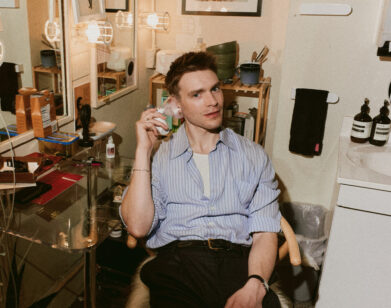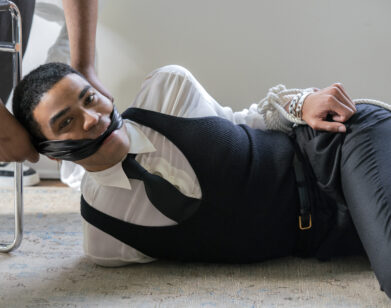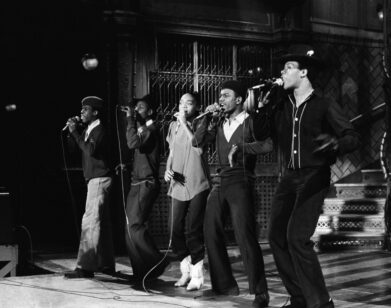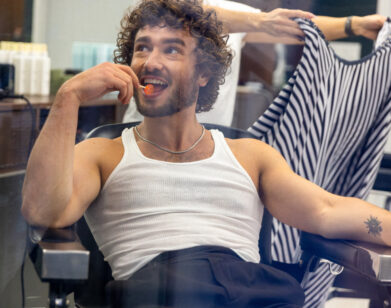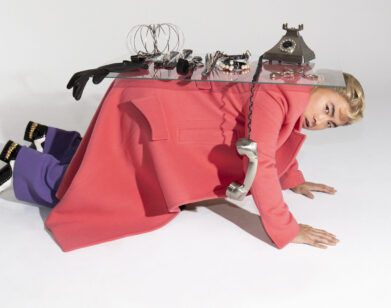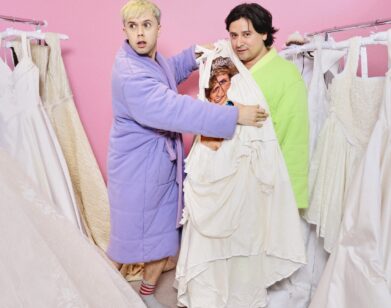Set Designer Jason Sherwood’s Recipe For Success: Musicals, Martinis, and Gossip
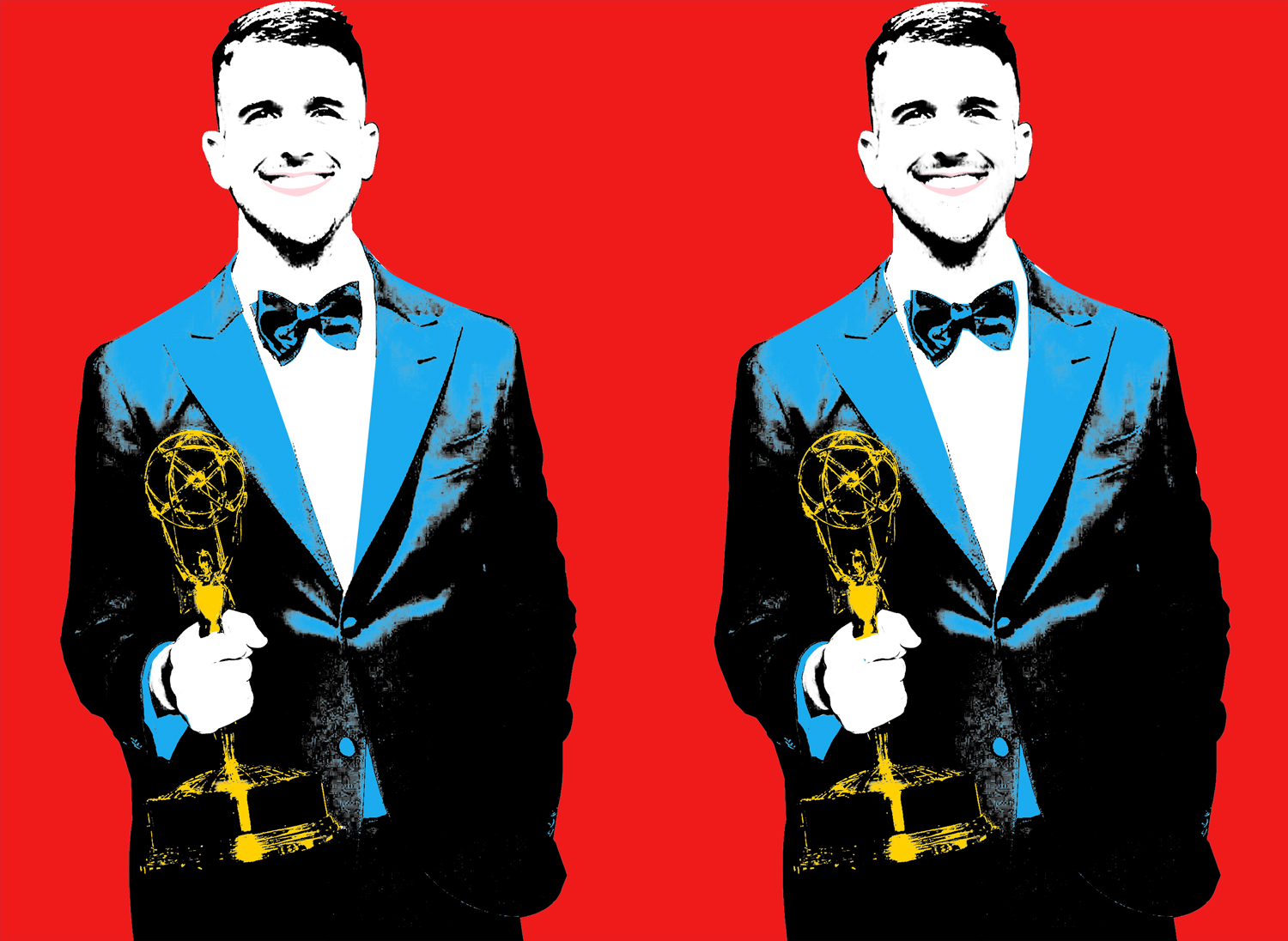
Very few people can say that they owe their career to the Chainsmokers, but the New York-based set designer Jason Sherwood is one of them. Sherwood—who cut his teeth designing the set of the pop duo’s Saturday Night Live performance in 2017, and as of this year has an Emmy under his belt for his work on Rent: Live—always knew he wanted to work in showbiz, or at least be part of that world. As he puts it, “I grew up going to Broadway shows with my mother. She’d take me out of school occasionally on Wednesday afternoons and I’d go with her ladies group, which is, like, totally responsible for my love of, like, musicals, martinis, and gossip.” It’s that first love that’s taken him furthest—even if he didn’t actually have to go very far. Sherwood grew up in New Jersey and attended NYU’s Tisch School of the Arts for set design, a decision that still boggles his mind: “[It] scared the shit out of my parents.” But his folks had nothing to worry about. Ever since that Chainsmokers SNL performance, Sherwood’s career has been nothing short of a wild, colorful, and very queer chain reaction. He’s added Sam Smith, the Spice Girls, Camila Cabello, and the cast of Rent: Live to his roster of collaborators, and will soon design tour sets for Sara Bareilles. In the end, as he tells me over cold brew at the Theatre Row Diner, it really all comes back to those Wednesday afternoons spent going to Broadway shows with his mother. “My parents watched me hatch this career dream 15 years ago as a teenager,” he says, discussing his recent Emmy win. “To share that moment with them, and thank them onstage, was the ultimate gift.” As for what’s next for the young creative, now that he’s conquered television, he’s set his eyes on Broadway. Below, Sherwood breaks down some of his biggest and brightest set designs, including those for Sam Smith’s world tour, the Spice Girls reunion tour, and an ode to Studio 54.
———
THE CHAINSMOKERS, SATURDAY NIGHT LIVE (2017)
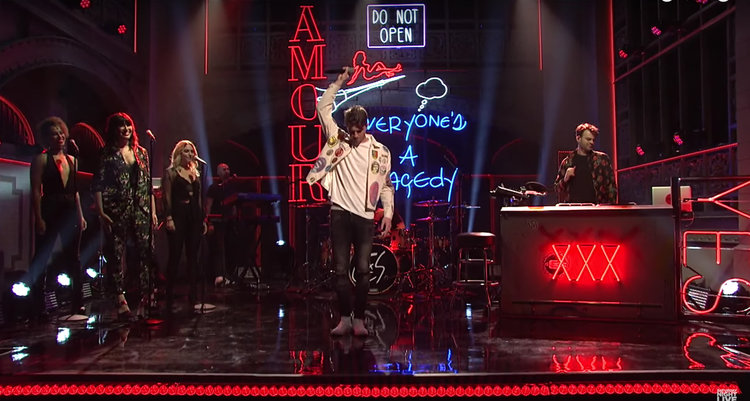
“It was right when that song ‘Paris’ was number one everywhere. It was the only song you’d hear on the radio. The performance was a turning point in my career because it opened me up to the music world and then to the television world in a really unique way. There’s an incredible creative producer and creative director named Raj Kapoor who found me and asked me to work on that Chainsmokers performance with him.”
———
THIS AIN’T NO DISCO, OFF-BROADWAY (2018)
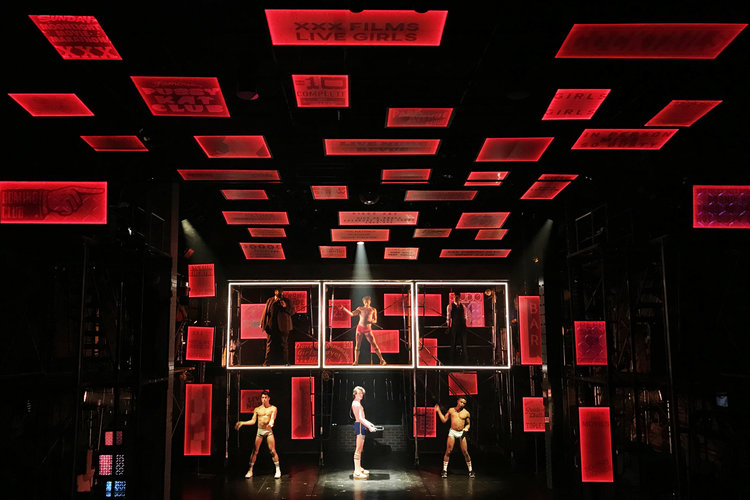
“It’s an Off-Broadway musical written by Stephen Trask, who co-wrote Hedwig and the Angry Inch. It was a show about Studio 54 and the Mudd Club. I have a longtime fascination with nightlife in New York City and its evolution and how it’s changed—the good things and the bad things about that. As a person who loves to go dancing, who is obsessed with sort of the disco music scene, being able to make something that would evoke that feeling was amazing. Now, this wasn’t meant to be a recreation of 54, but it was meant to evoke New York at the time. The thing about going to any great live performance moment or any great dance party is you form this mini-community for a night. It’s fucking ephemeral. Then you leave, and the spell is broken. It doesn’t even matter that that building is still there. That party will never be there again.”
———
SAM SMITH, THE THRILL OF IT ALL WORLD TOUR (2018)
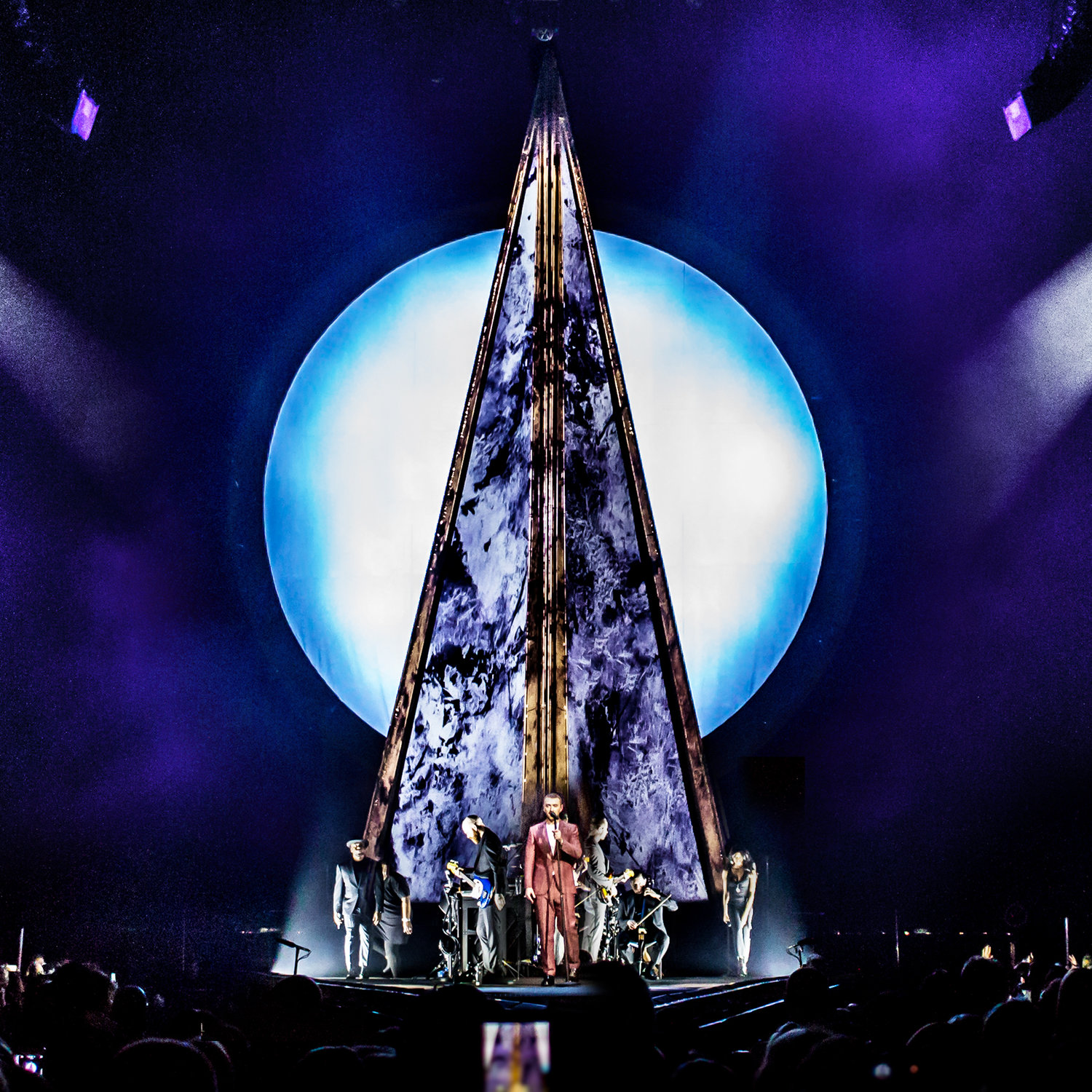
“In Sam’s case, it was the easiest sort of beginning of a collaboration ever because we were becoming collaborators and becoming friends at the same time. His work is so personal. It was so easy because he’s an open book and he’s kind. His work and his team is like his family. I mean, we did his tour, but also five or six major television performances for that on the Grammys, on the Brits, on the Ellen Show, on the Late Late Show, on SNL—all of that. For his concert, it was about creating a visual that was emotional and that got him as close to the audience as was possible so that they could have an intimate experience together. In an arena with 20,000 people, that’s a really tricky idea. I designed this very thin triangular stage (100 feet long) that jutted all the way out into the audience. Sam was basically thrust into the middle of the arena.
His songs are often siren songs. They’re love ballads. So it’s a single person standing, singing out into the void, waiting for someone to answer. We called this tower “the shard,” which was a riff on when we met in London for the first time. We wanted this icon to develop and for it to open up and for it to feel like a shedding of skin or like he was revealing something to us. So you see that at the beginning it has a texture and a skin on it. Then the petals actually opened out toward the audience. It was never meant to be a literal story. It’s not meant to be a literal flower or a literal lighthouse. But those sort of subliminal evocations are hopefully things that take the music and give it a progression.”
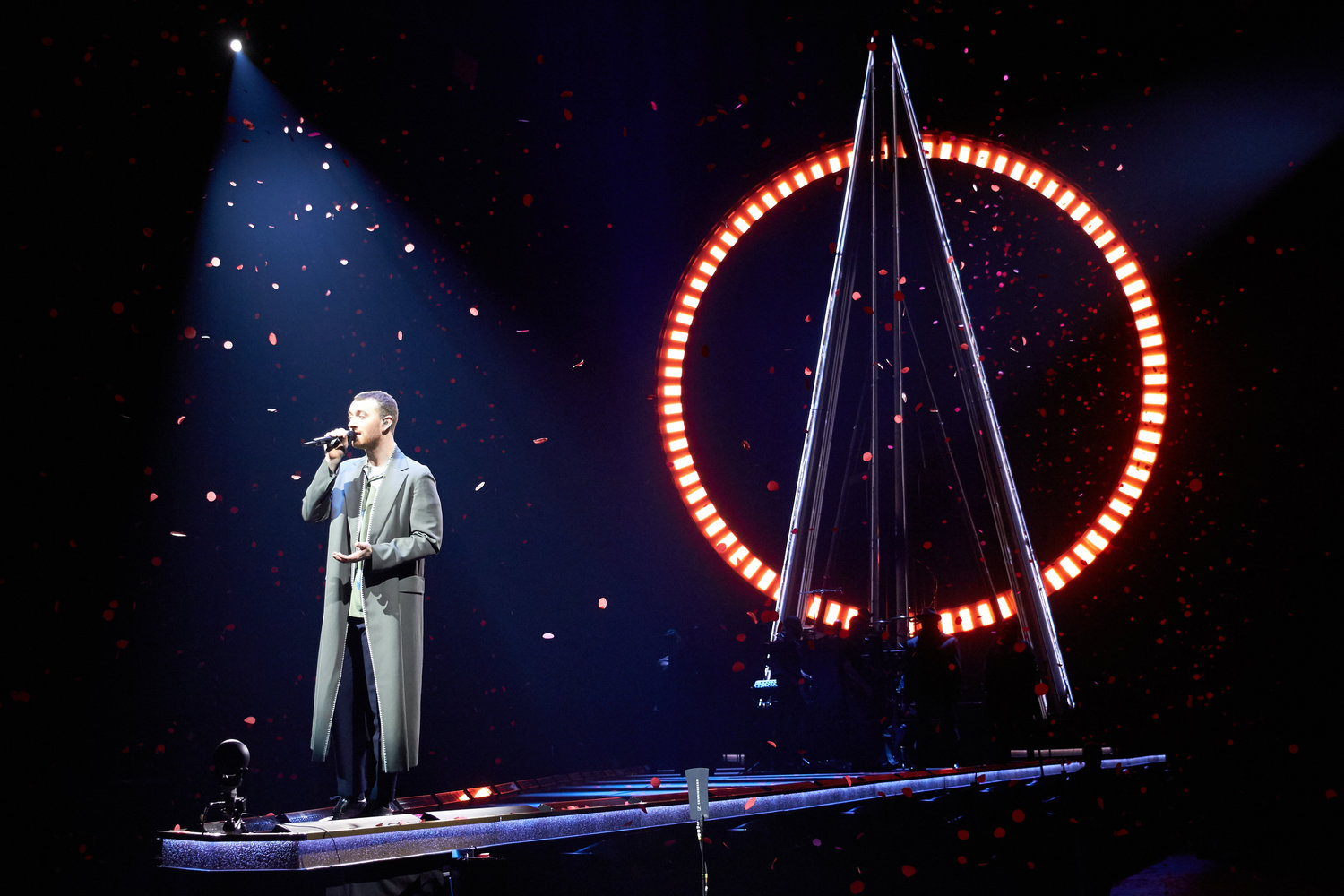
———
THE VIEW UPSTAIRS, OFF-BROADWAY (2017)
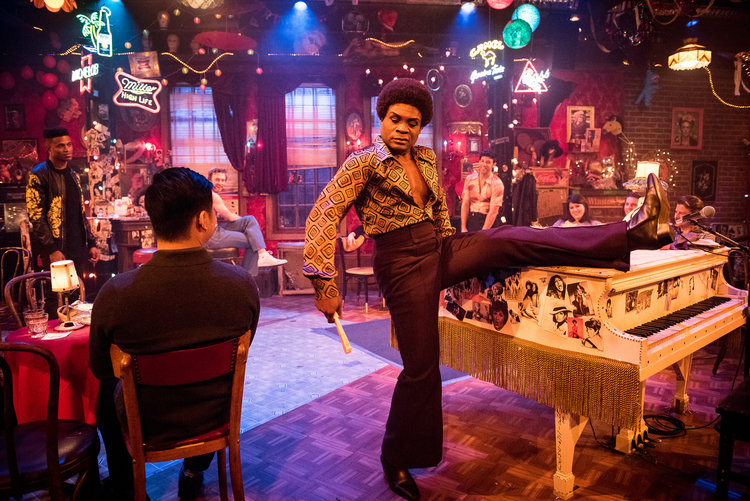
“One show that really sort of changed my trajectory in the city. A lot of the work that I do tends to be abstract or very geometric or very sort of installation-like. This was a show about the Upstairs Lounge, in New Orleans. A gay bar in the ’70s was burned down in a hate crime, which was the most fatal hate crime against gay people until the Pulse shooting. The show was meant to put the audience in the bar. So we’re in this crappy downtown theater, and we had like two dollars, and me and a bunch of friends basically decked this whole place out. There were no photos of the real space, so we got to make it up. We made a chandelier that was made out of dildos. It was a completely 360 environment. That show was one of my first shows in New York City that people got to see. I was nominated for a Drama Desk award and a Lucille Oertel award, which in the theater world are like the Off-Broadway Tony Awards. It felt like it was at the beginning of the American Trump era, and we had the power to create a queer safe space downtown that people would go to for two hours and experience the show. It was a whole group of queer people of color telling a story that people didn’t know anything about. Pulse had just happened. I felt proud of doing something that fell at a cross section of my identity and my sort of social interest in the United States when it felt like the whole world was sort of crumbling down and we were electing a racist.”
———
CAMILA CABELLO, “HAVANA” GRAMMY’S PERFORMANCE (2019)
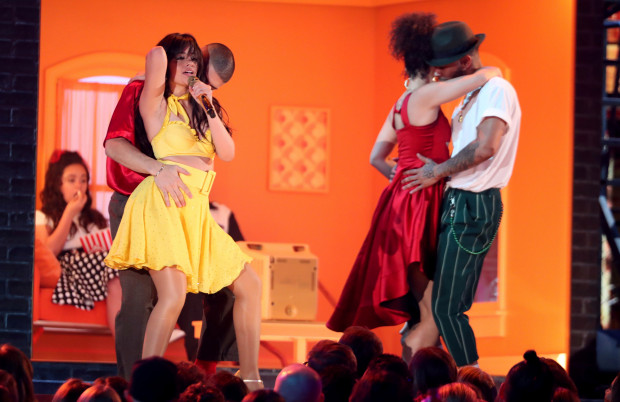
Photo by Matt Sayles/Invision/AP.
“Camila was working with director Paul Caslin who does a lot of her stuff. Paul had seen a bunch of my work online, and he said, ‘Listen, Camila wants to do sort of a revamped version of Havana,’ which had been out for a while at the time. And they said, ‘we want to create a sort of Spanish Harlem meets Havana meets West Side Story block party for the performance.’ I remember the performance came together really quickly. I was leaving for a trip to Singapore the day after I met with Camila and Paul about this. And I said, ‘Listen, this is the pink room and this is the blue room, this is the green room, this is the orange room. These rooms, once we make them, we can’t change the color.’ This was like 10 days before the Grammys. It was really fast. I asked Camila to ‘Please, please, please, please, please wear a yellow dress, and please don’t change that.’ I knew she would pop off the room beautifully and look like the star she is.”
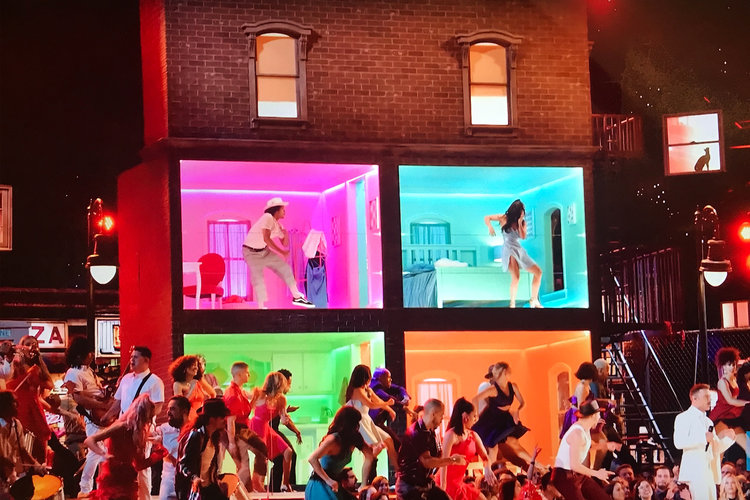
———
RENT: LIVE (2019)
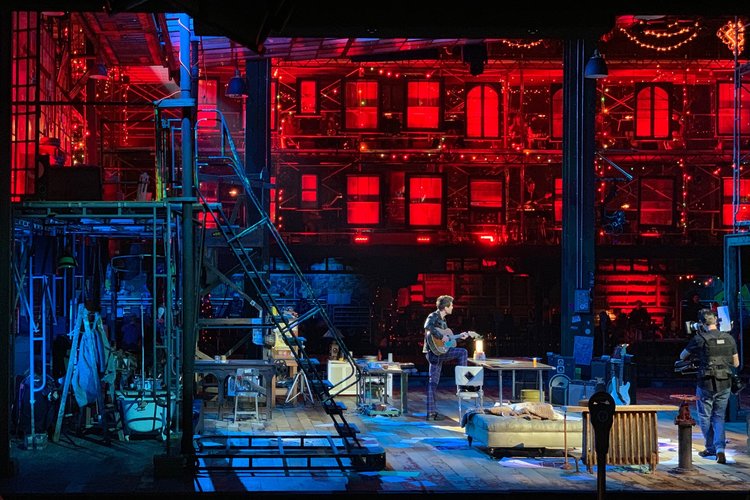
“The set was enormous. Imagine if you took the whole sort of high school football stadium and you put four walls around it and then filled it with 1500 people and actors and cameras. It was huge. It was nuts. It was the biggest thing I’ve ever done. Every single nook and cranny of that enormous space was decorated and dressed with props and painted perfectly. It was a really immersive thing. The director of the original production of Rent, Michael Greif—a theater legend and a genius. He was brought on to direct this on television and we were aware of each other. We wanted to do something. So I met with him and I said, ‘Instead of being like, you know, American Idol, it’s a little more like a Beyoncé concert.’ Basically creating an energy of something on television that felt truly live, not because the camera told you that it was, but because there were people there, experiencing it.”
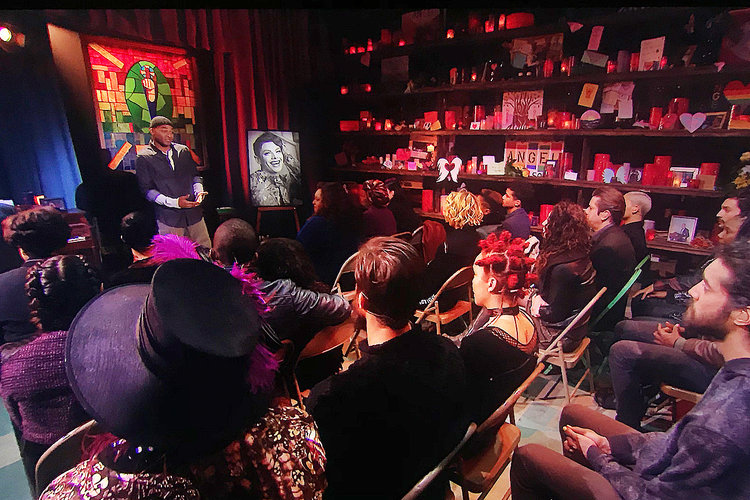
“Rent at a baseline is a story about a group of people in New York during the height of the AIDS crisis who are artists, so it’s about community. I saw that show when I was 13 years old on Broadway and it changed my life. It was the first time I saw two people who identified as the same gender singing to each other about love. So to bring that to an audience and millions of people was unusual and bizarre because it was like, ‘What are we doing on television? The last one of these was Grease.’ Like, there’s an entire song about an orgy. There’s an entire sequence about how you’re gonna go score your next heroin moment. How does all of that find its way into this, and still create an environment that felt authentic and true? This scene that we’re looking at here is a memorial scene for the character Angel. We created this wall of hundreds of candles and little notes and presents left for her. You can see the iconic Keith Haring “Silence Equals Death” poster. This wall was meant to be in the story, an homage to that character, but also to a generation of people we lost to this disease. Honestly, if that were the last job I ever did, that would be okay.”
———
THE SPICE GIRLS, SPICE WORLD TOUR (2019)
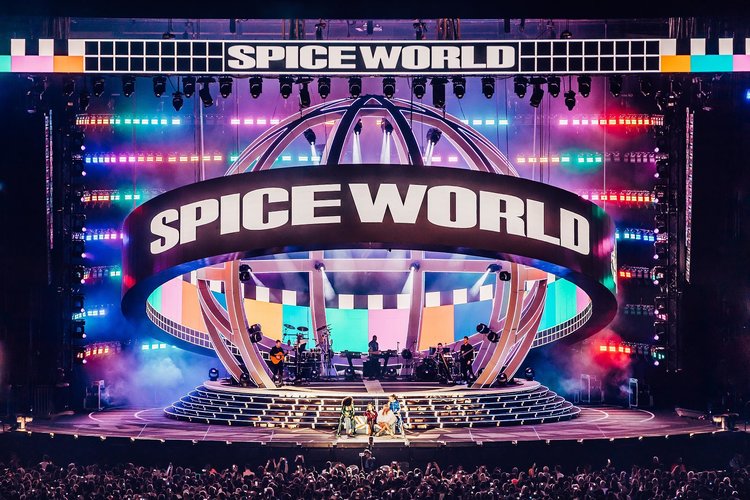
“The Spice Girls were the first concert I ever went to. I think at the time I said my favorite was Baby Spice (Emma Bunton). We went as a family, and I just loved them. I thought their whole energy and their individuality as performers was incredible. I grew up on that music. I remember having the CD, Spice World and the iconic sort of gold ring on the back—It had Spice emblazoned into it. So Lee Lodge, who I worked with on Sam Smith’s tour, called me one day, and he said, ‘Jason, can I tell you what I want, what I really want?’ I literally lost my mind. The thing about the Spice Girls—they weren’t releasing new music for this tour. It was about the old music. It was about the four of them coming together for the first time in 10 years. We wanted to create an actual party that felt like a nostalgia bomb. I wanted to be transported back to the sort of camp, very female-centric energy of what I experienced in the ’90s. My first impulse was to do something with that ring that was on the back of the CD. It very quickly evolved into looking somewhat like the actual Spice World logo. For the beginning of the show, we created a mantra and it said, ‘Welcome to Spice World all abilities, all genders, all sexual orientations, all countries of origin, all ethnicities are welcome here.’ This is a show where everyone could get down and party.”
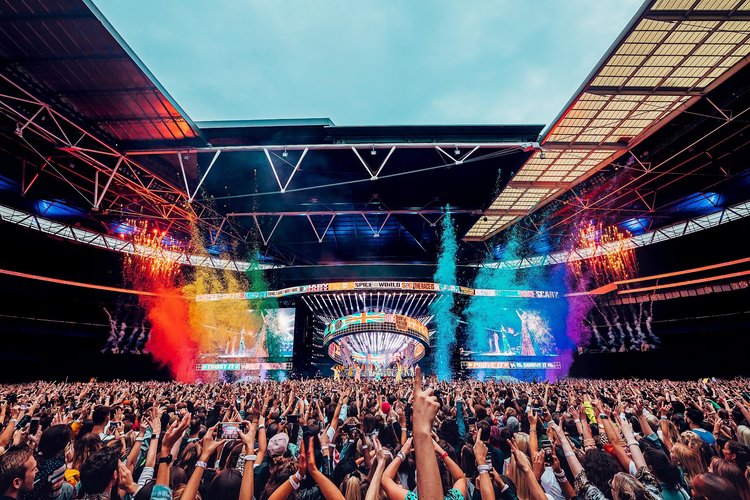
“Lee and I went to London and came with a single image of the design and we sat down with the four of them. We walked into the room, and there they were. It was the four Spice Girls. It was an unbelievable thing to be creating a show where you want to profess the idea of radical inclusion with a band that has meant a lot to a lot of different groups of people, particularly women. Then the day that they showed up to rehearsal, we rehearsed in a dance studio, which is typical, and then we brought them to where the set was loaded at this big airplane hangar in North England. They walked in and immediately came over to us and gave us huge hugs. I mean, there were tears in their eyes. It was incredible. And it was like ‘Thank you for making this for us,’ and for me it was like, ‘It was so easy to make something for you because I’ve loved you for so long.’

